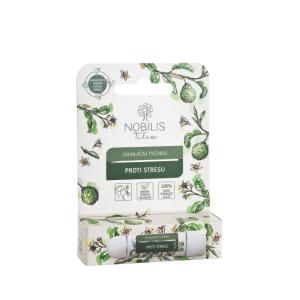
How to Relieve Skull Pain on Touch and When to Seek Help

What Skull Pain on Touch Can Mean and When to Be Alert
Almost everyone knows what a headache feels like—sometimes it's just an annoying pressure, other times it's a sharp, throbbing pain that makes normal functioning impossible. However, there is a less known but equally concerning type of pain: skull pain on touch. This is not just a common migraine or tension headache. This pain manifests primarily when touching the hairy part of the head or skull and can be a source of significant discomfort and concern. What can cause it? And when is it time to see a doctor?
When the Scalp Hurts
Unlike migraines or classic headaches, which occur "inside," skull pain on touch often affects the surface part of the head—the skin, hair follicles, and nerves passing under the skin. Many people describe this condition as burning, stinging, or sensitivity that worsens when combing hair, wearing a hat, or even lightly touching with hands. The pain is often present even at rest and can persist for several days.
This sensitivity can have various causes. One of the more common is tension headache, where the muscles in the neck, crown, and nape tighten. When these muscles are overstrained—due to stress, poor posture, or prolonged sitting at a computer—they can cause tension that manifests as tenderness on touch. Other symptoms often include eye fatigue or pressure behind the forehead.
But it's not just about muscle tension. The source can also be inflammation of hair follicles (folliculitis), which occurs, for example, due to poor hygiene, irritation from aggressive shampoos, or skin damage from razors. Besides scalp pain, redness, itching, or small bumps may also appear.
A less common but very painful reason can be trichodynia—a condition where the scalp is extremely sensitive and painful, even without visible irritation. This phenomenon is often associated with psychological stress, chronic fatigue syndrome, or even hair loss. Doctors sometimes refer to it as psychosomatic—meaning the pain arises from stress or psychological burden without an apparent physical cause.
In some cases, skull pain on touch can signal a neurological problem. Nerve inflammation (e.g., occipital neuralgia), where the occipital nerves running through the back of the skull become irritated, can cause stabbing pain that worsens with touch or head movement. This type of pain often spreads from the nape over the crown to the forehead and can be mistaken for a migraine.
An interesting phenomenon is also pain that develops after wearing a tight hairstyle, headgear, or even after prolonged headphone use. This type of pain is mechanical—caused by pressure on the skin. Many people do not realize that even something as "innocent" as a hair tie can lead to nerve endings overloading and result in pain.
When Pain is a Signal of Something More Serious
Most cases of sensitive scalp or skull pain on touch are not serious and can be resolved by adjusting lifestyle, reducing stress, or using more suitable cosmetics. However, there are situations when the pain should prompt a visit to the doctor.
Try our natural products
If additional symptoms accompany the pain—such as fever, neck stiffness, vision problems, rash, disorientation, or vomiting—it may be a sign of an infection or meningitis (inflammation of the brain's membranes), or another neurological problem. In these cases, it is a condition that requires immediate medical examination.
Similarly, pain that arises suddenly and is very intense, or conversely, persists for weeks without an apparent cause, should not be underestimated. Especially in people over 50, other possibilities should be considered—such as temporal arteritis, an inflammation of the blood vessels in the temple area, which can cause not only scalp pain but also permanent vision damage.
Stories from practice illustrate how diverse the causes can be. For example, thirty-year-old Markéta complained of painful sensations when combing her hair and wearing a helmet while biking. After a few weeks, redness and dandruff appeared. A dermatologist eventually diagnosed her with seborrheic dermatitis, an inflammatory skin disease that required changes in hair care and treatment with prescription ointments. "I never would have believed that something like this could cause such unpleasant pain," she confided.
What Can Help Relieve and How to Prevent Pain
If skull pain on touch is mild and not related to a serious condition, there are several simple steps to relieve it. Primarily important is gentle hair hygiene—choosing natural shampoos without sulfates and fragrances, avoiding frequent washing or blow-drying with high heat. Gentle hairbrushes made from natural materials that do not damage the skin are also suitable.
Stress prevention is also crucial, as it plays a key role not only in headaches but also in scalp pain. Relaxation techniques, yoga, meditation, or aromatherapy can help. Essential oils like lavender or peppermint have anti-inflammatory and analgesic properties and can be applied in diluted form directly to the skin.
If the pain is associated with muscle tension, gentle neck and crown massage is effective, ideally with the help of natural oils. In some cases, mild heating of the affected area with a hot water bottle or warming pad helps. Regular physical activity is also suitable, promoting blood circulation and muscle relaxation.
In cases where pain is caused by inflammation or infection, it is appropriate to seek a specialist—dermatologist or neurologist. Treatment may include topical antibiotics, corticosteroid ointments, or targeted physiotherapy.
It is also good to consider lifestyle and diet—a lack of B vitamins, zinc, or iron can affect skin health and the nervous system. A varied plant-based diet rich in antioxidants can significantly contribute to improving the condition. Products containing omega-3 fatty acids, such as flaxseed oil or hemp seeds, help reduce inflammatory processes and support regeneration.
"The body speaks to us through pain. Sometimes it's a whisper, other times a scream. It's up to us whether we'll listen," says renowned neurologist and author of books on psychosomatics, Dr. Jan Hnízdil.
In today's fast-paced world, it's easy to overlook the small signals our body sends. Scalp sensitivity and pain on touch may not immediately indicate a serious illness, but they certainly shouldn't be ignored. Every symptom is an opportunity to better understand our body—and perhaps slow down, take a breath, and give ourselves the care we often postpone.


